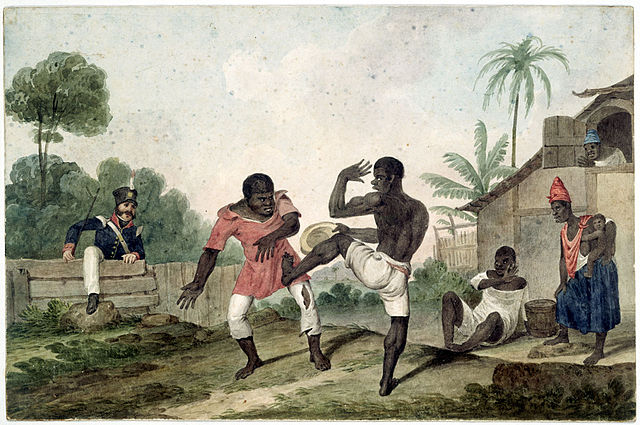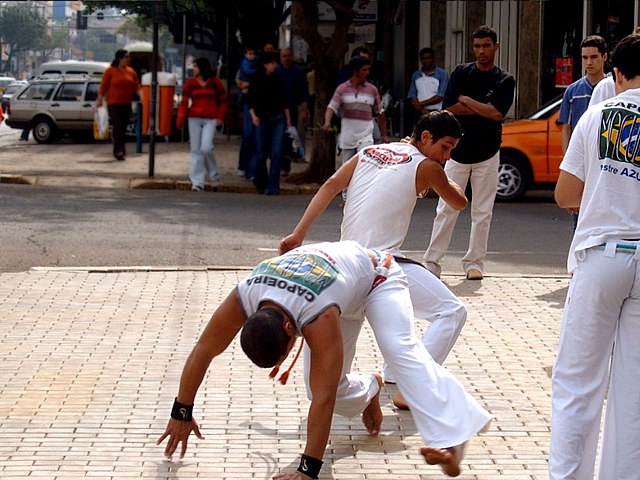Capoeira is an Afro-Brazilian martial art and game that includes elements of dance, acrobatics, music and spirituality.
Capoeira or the Dance of War by Johann Moritz Rugendas, 1825, published in 1835
Negroes fighting by Augustus Earle, c. 1824. Painting depicting an illegal capoeira-like game in Rio de Janeiro.
San Salvador, 1835, by Rugendas. "The scene is set in a clearing surrounded by tropical vegetation and palm trees, corresponding precisely to the space called capoeira in Brazil."
Capoeiristas outside
Afro-Brazilians are Brazilians who have predominantly sub-Saharan African ancestry. Most members of another group of people, multiracial Brazilians or pardos, may also have a range of degree of African ancestry. Depending on the circumstances, the ones whose African features are more evident are always or frequently seen by others as "africans" - consequently identifying themselves as such, while the ones for whom this evidence is lesser may not be seen as such as regularly. It is important to note that the term pardo, such as preto, is rarely used outside the census spectrum. Brazilian society has a range of words, including negro itself, to describe multiracial people.
Recife was the first slave port in the Americas.
Afro-Brazilians dancing a jongo, c. 1822
Punishing slaves at Calabouço, in Rio de Janeiro, c. 1822
Painting by Jacques Etienne Arago titled Slave punishment (1839), in Brazil's Museu Afro Brasil







